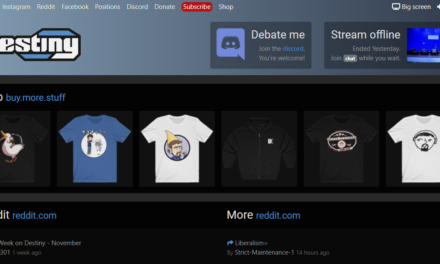According to the U.S. Copyright Office, “It is a principle of American law that an author of a work may reap the fruits of his or her intellectual creativity for a limited period of time.” “Copyright” literally means the right to copy. There are more than 300 years of history and legal cases that developed copyright law in the U.S. It all began in England in the late 15th century, with the introduction of the printing press. In 1710, Parliament passed the Statute of Anne, which “established the principles of authors’ ownership of copyright, preventing a monopoly by booksellers,” according to the Library of Congress (LC).
Skip to 1998, when President Bill Clinton signed the Digital Millennium Copyright Act (DMCA) in an effort to move the nation’s copyright law into the digital age. Among other things, the DMCA sets limitations on copyright infringement liability for online service providers (OSPs). “If you post something on the internet, the OSP that gave you access to the internet didn’t want to be responsible if you were infringing copyright. That was one of the big topics the DMCA was meant to address,” explains Frederic Haber, VP, secretary, and general counsel of the Copyright Clearance Center (CCC).
The DMCA also imposes rules prohibiting the circumvention of technological protection measures used by copyright owners to protect their works. “If somebody with a copyrighted work put a digital lock on it, you were not allowed to break the lock,” says Haber. For instance, if an ebook publisher locks the text with DRM tools, it is illegal to break that lock.
Haber believes that copyright law follows the rules of English common law; as society advances, “there is an evolution from case to case, where judges make rulings based on precedent.” Therefore, the current law will continue to transform, untouched. However, Haber also notes that some of his younger colleagues at CCC would disagree, saying that technology is advancing much too quickly for copyright law to keep up.
Fair Use, a doctrine that permits limited use of copyrighted material without acquiring permission from the rightsholders, aims to preserve the balance between protecting information and affording access to it.
For businesses concerned with keeping everything legal while empowering their customers to share their content, Jenny Q. Ta, CEO and founder of the social network Sqeeqee, urges companies to “develop a healthy relationship with your userbase and help them understand the proper handling of legal information requests.” Your users need to understand the differences between legal and illegal use of your service, says Ta. “These policies should explain in explicit detail the forms of media and content that can be shared without fear of legal action.”
Lesley Ellen Harris, J.D., consultant, and author of Copyrightlaws.com, offers an example of legal versus illegal use according to copyright law: “Linking to an article or image on someone else’s blog is fine; copying and pasting that same article and image from another blog onto yours generally requires permission.” Posting it without obtaining that permission could result in litigation.
One of easiest ways a company can protect its content is by publishing terms of service on its website, establishing the fact that it owns all the content and photos on the site. Additionally, if the company shares content on other platforms, terms of service were likely agreed on during sign up, which was likely never read by the user. “I would say about 1% of the population read the terms of service and probably less than 1% click agreements,” reveals Peter Vogel, chair of the Electronic Discovery Group and the internet, ecommerce, and technology industry team at Gardere. “So if businesses are going to use content from a website, they ought to read the terms of service to see whether or not they can freely take and do anything they want with it.”
According to Ta, in order to determine whether something is OK to share via social media or your own blog, businesses must answer a few key questions:
- Does sharing the content violate your business service agreements?
- Will sharing potentially put users or customers at risk of litigation?
- Does sharing the content violate copyright law?
- Will sharing likely damage the company’s reputation?
The lines get a little blurry when it comes to content curation. “If you change 1% of the content, have you infringed because you are using 99%? There’s a point after which if 50% or 60% of the content is changed and you’ve revised the rest, is it a derivative work of the original or not?” asks Vogel. “There is really no bright line in the courts about at what point you have made illegal use of the content.”
“Sharing and reusing are both reproductions of content,” says Harris. So users must ask themselves, “Is it content that is protected by copyright? If so, do I have explicit or implied permission to use it? Or is there an exception in the copyright act that allows me to use that content without permission?”
Today, many organizations encourage audiences to share their content. If a company has Facebook, Twitter, and Pinterest buttons on its website, it’s generally safe to assume that you can share their content in those places. “The key words are ‘in those places.’ You can’t, for example, reproduce that content in a print or ebook,” Harris clarifies.
For those looking to seek legal recourse for copyright infringement, it could be a rocky road. “If you want your content taken down and the website refuses, you may have to file a lawsuit against the website or against the website’s host to force them to remove it,” says Vogel. “This is a very expensive proposition, so a lot of people don’t bother because they can’t afford the cost of fighting it.” To make things even more complicated, if the content is posted in another country, the laws of that country apply.
“Copyright is written in such a way that in the United States, it has very few clear black and white lines that tell you yes or no, it’s right or wrong,” explains Haber. Therefore, we rely on the evolution of 300 years of history and ongoing case law to make it up as we go.
(Image courtesy of Shutterstock.)






